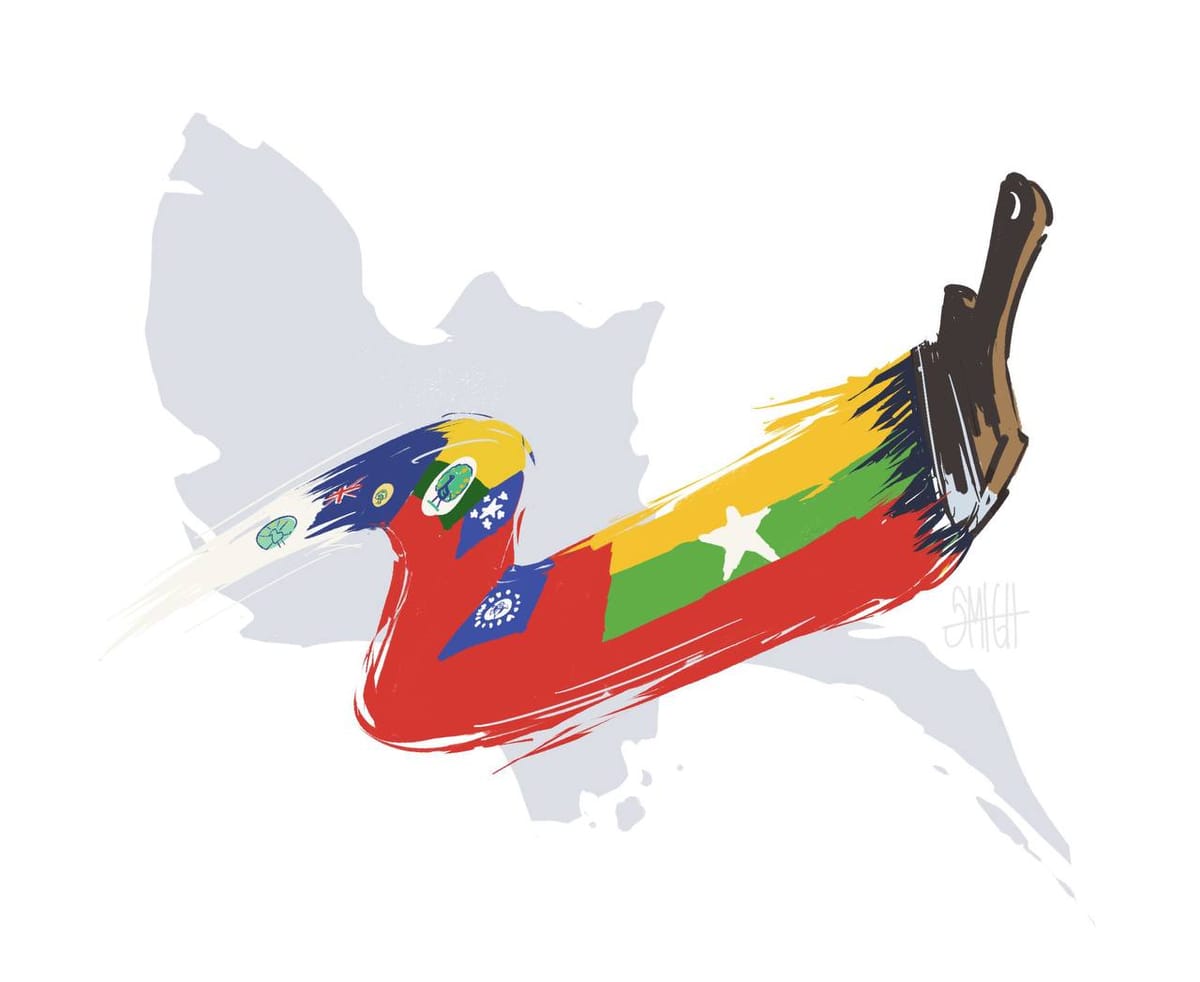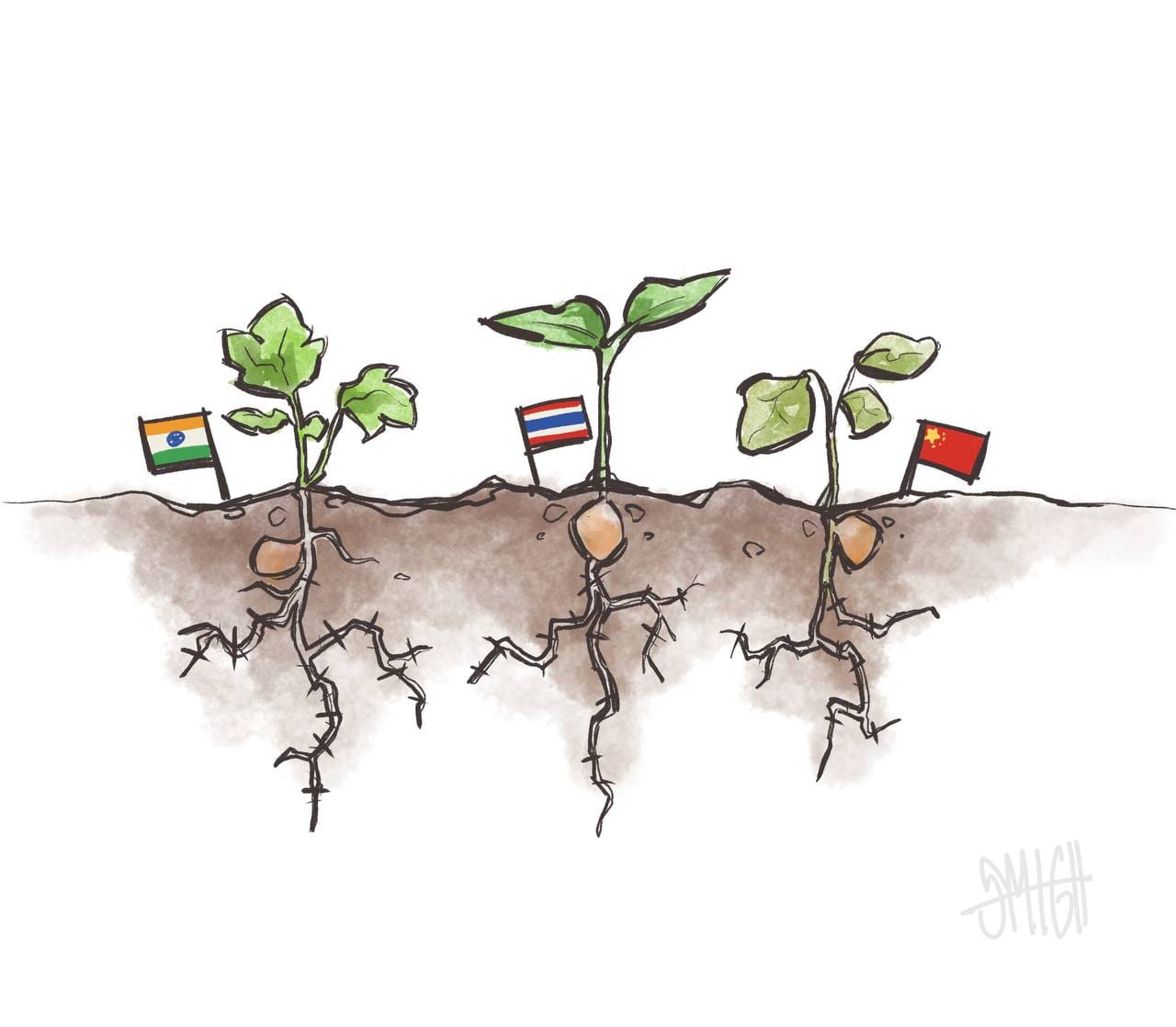
Myanmar - The Golden Land of Southeast Asia
What are three things that come to your mind about Myanmar? The official name of the country is "The Republic of the Union of Myanmar." Before 1989, it was known as Burma, after which it was changed to Myanmar. The country's official capital is Naypyidaw.
Geography and Ethnic Groups
In reality, Myanmar is a country in Southeast Asia that remains relatively unknown on the international stage. It shares borders with China, Laos, Thailand, India, and Bangladesh. With a population of over 54 million, Myanmar shares a long border with the global superpower China and also borders India.
For international tourists, guidebooks often refer to it as "Golden Land Myanmar." Though not as famous as its neighboring countries, this nation is the birthplace of U Thant, who served two terms as the UN Secretary-General, Nobel Peace Prize laureate Aung San Suu Kyi, and ONE Championship fighter Aung La N Sang.
Myanmar, once under British colonial rule, has been blessed with abundant natural resources but has also been marked by one of the world's longest-running civil wars due to the challenges of building trust between ethnic groups with different historical backgrounds.
Ancient civilizations flourished in cities like Beikthano, Hanlin, and Sri Ksetra, which are now UNESCO World Heritage sites in Myanmar.
The country's prominent history involves four major ethnic groups: Bamar, Mon, Rakhine, and Shan. However, Myanmar is not home to just these four ethnicities. Government records indicate the presence of 135 ethnic groups or nationalities, along with Chinese and Indian descendants.
Ancient Myanmar History and Kings
Looking back at the country's history, three Burmese kings - Anawrahta, Bayinnaung, and Alaungpaya - established three different dynasties and wielded great power. Among these kings, Anawrahta was instrumental in promoting Buddhism, which the majority of the population follows today, while the other two kings were recorded in history as military strategists who strengthened the nation through conquest. These three kings have become role models for today's Myanmar military.
The Burmese kings fought with the Chinese and repeatedly conquered Siam (modern-day Thailand). Some territories of present-day Bangladesh were also once under Burmese royal control.
During the era of city-states, Burmese kings fought not only among themselves but also with Rakhine, Shan, and Mon ethnic groups. These ethnic groups also fought among themselves. While Burmese kings conquered Rakhine, Rakhine kings also challenged the Burmese throne. Eventually, the Rakhine kingdom fell under Burmese rule during the reign of King Maha Bandula.
The Mon kings were the main rivals to Burmese power. Like the Bamars, the Mon people possessed their own literature, culture, language, and strong national identity. The Bamar and Mon engaged in territorial disputes in the 14th century, recorded in Burmese history as the "Forty Years' War." Today's prominent commercial capital Yangon and Bago were under Mon control for many years before eventually falling to Burmese rule.
Colonial Era and Independence Struggle
The British colonized the Burmese throne in three stages (1824, 1852, 1885). In 1885, they exiled the last Burmese king, Thibaw, to Ratnagiri, India. On January 1, 1886, all of Myanmar came under Queen Victoria's colonial rule.
Like other colonized nations, Myanmar developed a national liberation movement. General Aung San, father of Nobel Peace Prize laureate Aung San Suu Kyi, led Myanmar's national liberation struggle. He formed the Thirty Comrades with Japanese assistance to fight the British. This group became the foundation of the Myanmar Armed Forces. They initially allied with Japan to expel the British. When Japan only offered pseudo-independence, the nationalist forces then allied with the British to fight against Japan. Subsequently, the previously fragmented ethnic groups, including the Bamar, signed the Panglong Agreement on February 12, 1947, agreeing to live together as "coming together" in one nation. Although some ethnic groups didn't sign the agreement initially, they later integrated as Myanmar citizens.
Three years after World War II, on January 4, 1948, Myanmar emerged as an independent nation in Southeast Asia, like other countries in the region.
Modern Myanmar - The Path to Democracy
Civil war broke out just three months after independence when the Communist Party of Burma went underground, marking the beginning of what would become the world's longest civil war. Subsequently, the country's history became intertwined with military coups. After independence, the military seized power three times: in 1958, 1962, and 1988. Simultaneously, armed revolutionary groups emerged among the ethnic groups who had previously agreed to live together.
The 1988 8888 Uprising gained worldwide attention. Although the National League for Democracy (NLD) won the 1990 election with popular support, the military refused to transfer power. Political changes began with the 2010 general election, leading to President Thein Sein's semi-civilian government. The country underwent political and economic transformations, and Myanmar made global headlines with its open-door policy. In 2012, racial riots occurred in Rakhine State.
The NLD won the 2012 by-elections with overwhelming public support and entered parliament. In the 2015 general election, the popularly elected NLD formed the government and implemented continuous reforms.
In 2017, after ARSA attacked outposts in northern Rakhine State, the military conducted clearance operations. This resulted in about 700,000 Bengali (Rohingya) fleeing to Bangladesh, leading Gambia to file a genocide case against Myanmar's military at the International Court of Justice (ICJ). State Counsellor Aung San Suu Kyi personally defended Myanmar at the court.
The 2011-2021 decade marked a period of democratic dawn for Myanmar, characterized by economic progress, democratic and human rights standards, and citizens' freedom values.
Current Situation and Future
In 2020, amid the COVID-19 pandemic, the ruling NLD successfully held elections. However, citing electoral fraud, the military seized power again on February 1, 2021. Thus, in the 76 years since independence until 2024, the military has seized power four times and ruled for over 50 years. The country has only experienced about 20 years free from military rule: 10 years of parliamentary democracy after independence and 10 years following the 2010 political transition.
Following the 2021 coup, armed resistance emerged nationwide and continues as of 2024.
Han Thit Eain (Y3A)
Read More:
 Build Myanmar - MediaY3A
Build Myanmar - MediaY3A
 Build Myanmar - MediaY3A
Build Myanmar - MediaY3A
Build Myanmar-Media : Insights | Empowering Myanmar Youth, Culture, and Innovation
Build Myanmar-Media Insights brings you in-depth articles that cover the intersection of Myanmar’s rich culture, youth empowerment, and the latest developments in technology and business.
Sign up for Build Myanmar - Media
Myanmar's leading Media Brand focusing on rebuilding Myanmar. We cover emerging tech, youth development and market insights.
No spam. Unsubscribe anytime.
Sign up now to get the latest insights directly to your mailbox from the Myanmar's No.1 Tech and Business media source.
📅 New content every week, featuring stories that connect Myanmar’s heritage with its future.
📰 Explore more:
- Website: https://www.buildmyanmarmedia.com/
- Facebook: https://www.facebook.com/buildmyanmar
- YouTube: https://youtube.com/@buildmyanmarmedia
- Telegram: https://t.me/+6_0G6CLwrwMwZTIx
- Inquiry: info@buildmyanmar.org
#BuildMyanmarNews #DailyNewsMyanmar #MyanmarUpdates #MyanmarNews #BuildMyanmarMedia #Myanmarliterature #myanmararticle #Updates #Insights #Media
